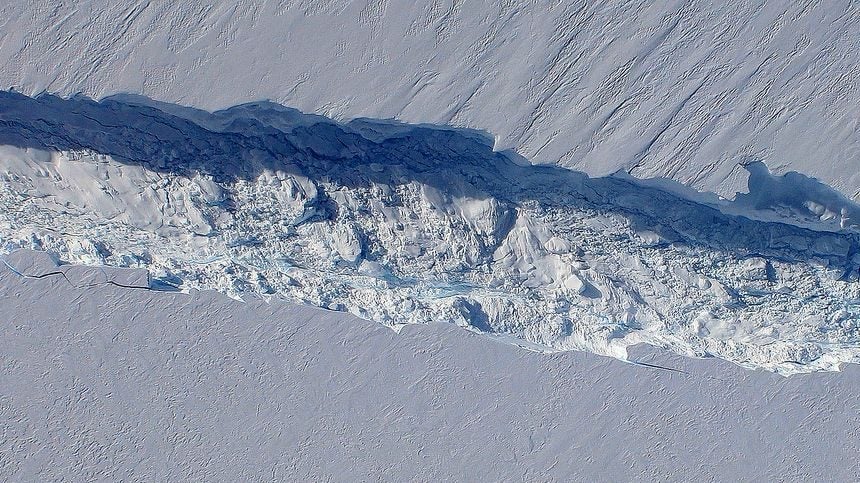Antarctica’s Pine Island glacier is about to lose another enormous piece
According to recent satellite photos, Antarctica’s Pine Island glacier has developed a 18 mile (30 km) rift, indicating it could soon lose another huge chunk. Geoscientist Stef Lhermitte, an assistant professor at Delft University in the Netherlands, tweeted a gif contrasting a riftless glacier on Sept. 17 with the same glacier showing a visible rift on Oct. 1, indicating that the huge crack appeared sometime during the last couple weeks of September.


According to recent satellite photos, Antarctica’s Pine Island glacier has developed a 18 mile (30 km) rift, indicating it could soon lose another huge chunk. Geoscientist Stef Lhermitte, an assistant professor at Delft University in the Netherlands, tweeted a gif contrasting a riftless glacier on Sept. 17 with the same glacier showing a visible rift on Oct. 1, indicating that the huge crack appeared sometime during the last couple weeks of September.
It’s normal for icebergs to break off from glaciers, but the Pine Island glacier, one of the largest in West Antarctica, has been calving icebergs at an especially fast pace. Around a year ago, it calved an enormous iceberg 103 sq miles in size; in 2015, a 225-sq-mile chunk broke away, and in 2013, a 252-sq-mile iceberg calved off. Lhermitte estimates the current rift could lead to a loss of ice around 115 sq miles, which would be the sixth significant calving event on the Pine Island glacier since 2001. In these GIFs, you can see the shifting “fronts” of the glacier over time:
Scientists are also concerned about the way the Pine Island glacier’s ice has been melting. While rifts usually form on the sides of glaciers, new rifts on Pine Island have formed further inland (paywall) than before, suggesting that warmer ocean temperatures could be weakening the base of the glacier.
Pine Island’s ice loss has serious implications for sea-level rise; scientists estimate that if the entire glacier melts, it could raise sea levels by 1.7 ft (about half a meter). That’s unlikely to happen right away, but models suggest that unless we curb greenhouse-gas emissions, ice loss from glaciers like Pine Island could cause more than a meter in sea level rise. There’s evidence the melting process is speeding up: the rate of glacial melt tripled (pdf) in the West Antarctica region over the last 15 years, and the area’s total glacial melt currently accounts for 5-10% of global sea level rise (paywall). To wrap your head around how much ice melts each year in West Antarctica, here’s an evocative statistic from NASA:
The total amount of loss averaged 83 gigatons per year (91.5 billion US tons). By comparison, Mt. Everest weighs about 161 gigatons, meaning the Antarctic glaciers lost an amount of water weight equivalent to Mt. Everest every two years over the last 21 years.
According to Lhermitte, if this iceberg calves from Pine Island, the glacier will have retreated around 4 miles.